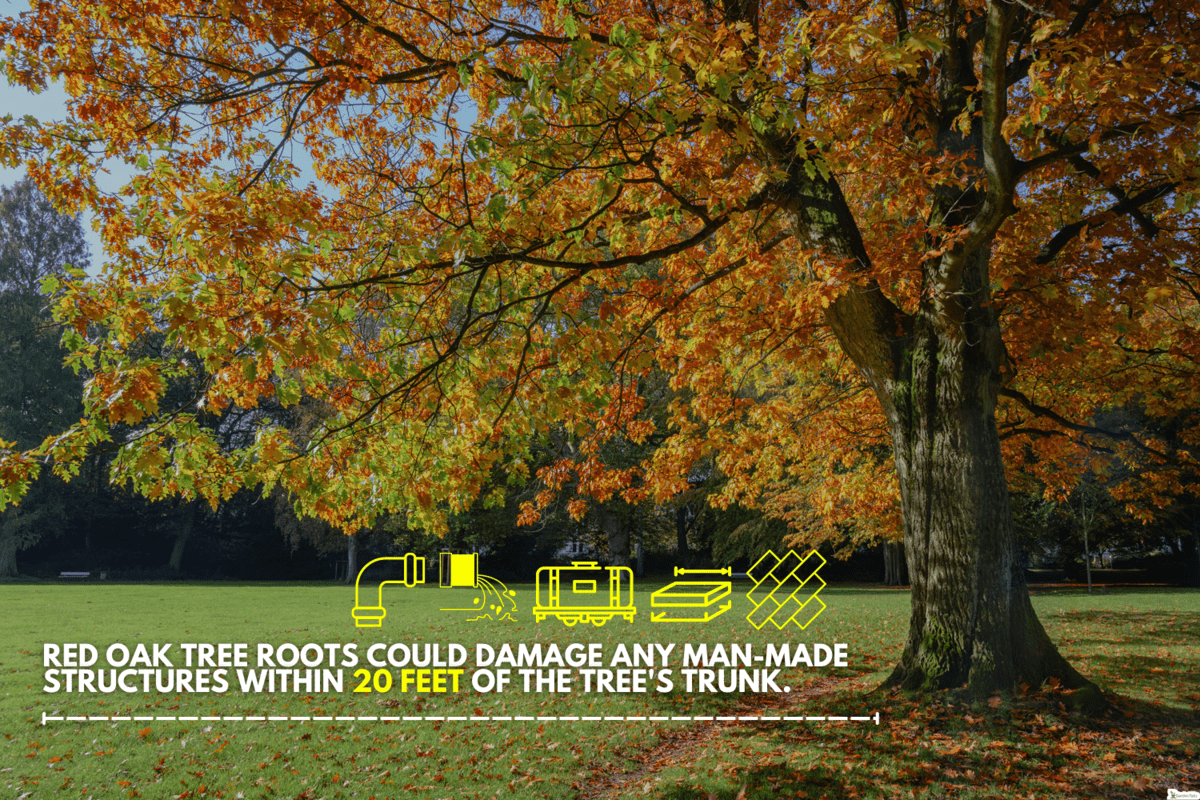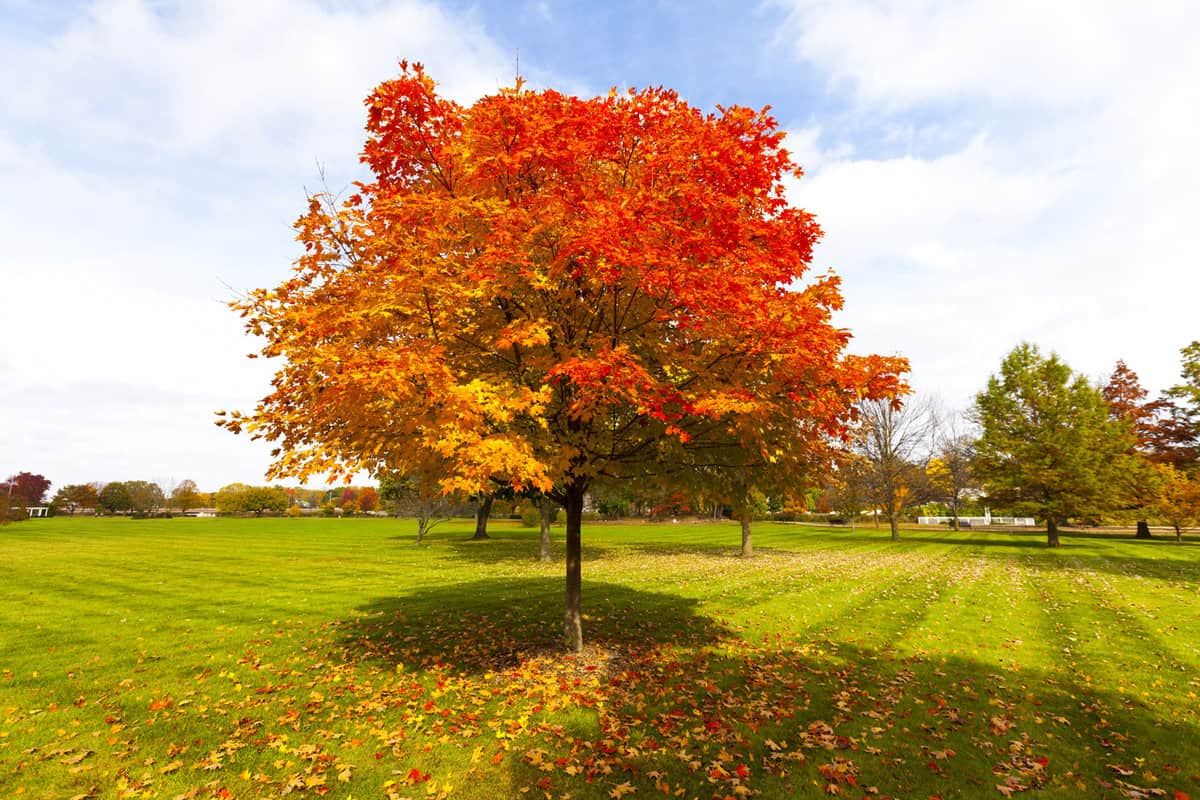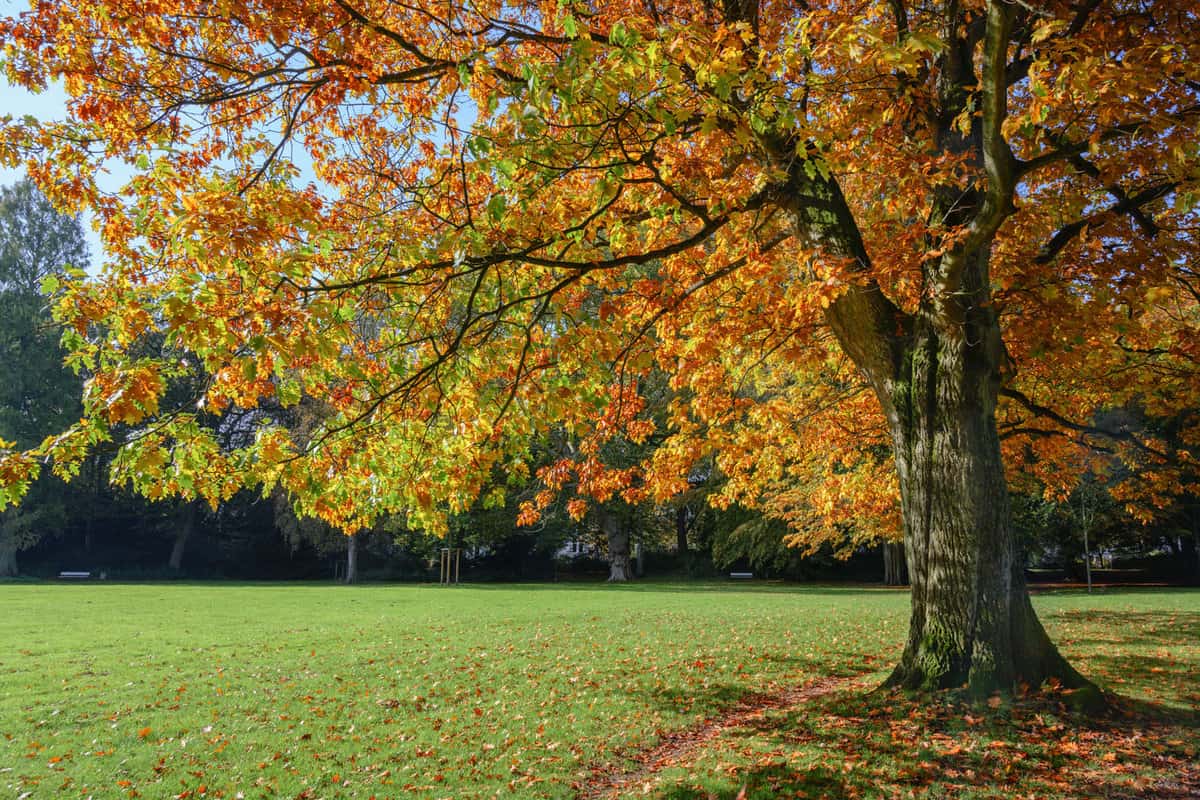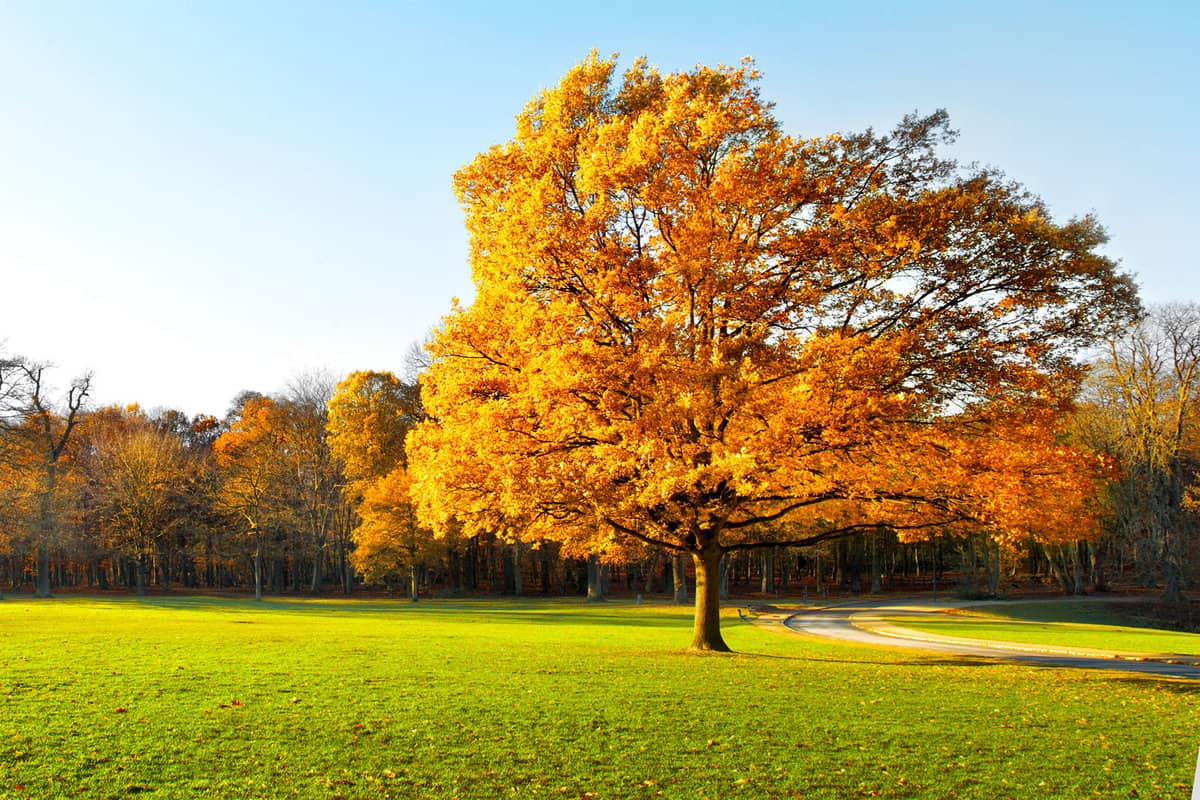You like the idea of incorporating the rich fall foliage of red oaks into your landscape. But you're worried that as the trees grow larger, their roots could damage the property. We've researched this topic in-depth, and we can answer whether red oak roots are invasive.
Red oak tree roots can be invasive. It's because they could damage any man-made structures within 20 feet of the tree's trunk. This includes underground water pipes, sewer lines, septic tanks, house foundations, paved surfaces, and pools.
Oak tree roots mainly spread outward rather than downward. These roots can spread laterally from the trunk, even 3–7 times wider than the branches! Oak tree roots are always seeking water, and they can spread fast in this search.
Surprised at how productive they are? Keep reading, and you'll discover more!

How far from a house should an oak tree be?
Oak trees must be kept at least 20 feet (6 meters) away from houses to protect the house foundations. If you can allow for up to 30 feet, that would be an even safer margin.

But you should not just think of your house. Oak trees should be kept 20 feet away from swimming pools, underground water lines, sewage pipes, and septic tanks because oak tree roots will invade and potentially harm these structures.
It's because the roots are always actively looking for water. Oaks can consume huge amounts of water (50 to 100 gallons per day). They're very thirsty trees!
Keep oak roots away from paved walkways and driveways. As the tree grows and its roots thicken, the concrete slabs on top of it could crack and lift. This could pose a trip and fall hazard for your family and passersby.
For more details, read: "How Far From House Should Oak Tree Be Planted?"
How far do red oak roots spread?

Mature oak trees can have roots that extend 75–250 feet (20–75 meters).
Oak roots taper off beyond 20 feet from the trunk and form a network of extremely small, threadlike roots. Even though they may spread hundreds of feet, these small roots do not pose a threat to your home.
You really only need to worry about the 20-foot-long roots.
Why is the red oak a messy tree?
The exact amount of fallen leaves and acorns per tree is difficult to predict, as it varies depending on the size and maturity of the tree. You need to understand, though, that you will need to clean up deciduousness every autumn.
Leaf mold makes wonderful fertilizer, but yard work just might not be your thing. And red oaks are prolific leaf and acorn bearers. As for the acorns, cars parked under red oaks have been known to experience dents from acorns falling from high enough branches.

Red oaks are untidy all year round, not just in the fall; they are also messy in the spring!
Large red oaks can shed a massive volume of catkins, which are small clusters of pollen-bearing flowers. Catkins can trigger allergies in you and your family, and if you allow them to collect in your car, they can damage electrical components.
How do you stop oak tree roots from growing?
Now, what used to be a sapling is now a 6-foot-tall oak tree, and it's 15 feet from your back door. Can you stop it from growing?
Trimming Roots: Not The Best Option
Unfortunately, you cannot stop roots from growing without killing the oak tree. If you try to use herbicide on the roots, it will kill the tree. Even simple household vinegar applied to oak roots will kill the tree.
Some argue that cutting the roots off works. But even expert arborists know they can only trim outgrown roots a maximum of 3 inches. If they improperly trim a root, the tree could die of malnutrition. Mis-trimmed oaks have been known to lean and fall in storms because they were weakened by having too much of a root or roots removed.
The problem then becomes: what if the tree falls where you don't want it to? What if it falls on a neighbor's house or car? What if it falls on your house or car? The property damage could be huge. So in the interest of long-term safety, root cutting should not be considered an option.
Root Barriers

In the situation above, where the tree is still relatively small (6 feet), and you don't want to cut it down and start over, you can invest in what's called a root barrier. This underground wall is placed to block plant roots, often to protect structures.
But the technology has progressively improved so that any material, be it made of concrete, plastic sheets, corrugated fiberglass, or fabric, can be used, as long as the material does what a root barrier is supposed to do.
That is, to direct a tree's roots downward and deeper into the ground instead of where they're allowed to grow sideways, pushing into, say, the foundation of a house.
A root barrier doesn't have to be built like a tank. As long as it can direct roots away and downward, it's doing its job.
It's a solution, no matter the tree's maturity. If the tree is a few decades old and encroaching on a structure, there's a root barrier system that can be designed for that.
If, as mentioned above, the tree is still young, you can even purchase off-the-shelf patented mechanical guides from a company called Deeproot online and install it yourself.
Get Deeproot barrier on Amazon.
The Upside Of Oak Tree Roots

Mature oak trees are a fabulous, colorful addition to your landscape. They provide shade, filter the air, and could even become a family-friendly playground for climbing or attaching a swing. Ensuring you plant the oak tree at least 20 feet from nearby and underground structures will keep your property safe from invasive roots.
Looking for tips on planting your oak tree? Check out: "How Long To Soak Bare Root Trees Before Planting?"

